| 
Library >> Research
GENI Research Categories
Renewable Energy Research by Specific Region
Africa
| Asia
| China
| Europe
| India
| Latin America
| Middle East
| North America
| Oceania
| Small Island Nations
| Rural Electrification
Green Energy Research
Research that forwards GENI's Mission
Green Energy Research
Renewable
Energy Research by Specific Region
Africa
| Asia
| China
| Europe
| India
| Latin America
| Middle East
| North America
| Oceania
| Small Island Nations
| Regional Rural Electrification
- Regional Rural Electrification
Articles published by: GENI, Peter Meisen and Others:
- About GENI
- Selected Articles About International Interconnections
These are organizations formed between three or more
nations to work on issues that relate to all of the countries in the organization.
Index contains mainly global socio-economic models,
and doesn't address a wide range of other models created
to address specific fields such as climate/GCM (general
circulation models), manufacturing, traffic/transportation,
plant energy exchange, etc. This is clearly a subjective
classification.
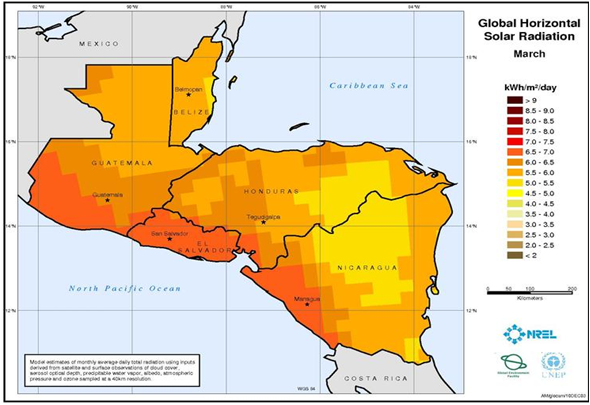 The
region is wealthy in renewable resources and is poised
to restructure its energy sectors, particularly in
electricity generation, so as to be renewables-based.
Developing renewables-based energy sectors has become
central to the economic, development, and poverty
alleviation strategies of all Central American countries.
Regional interconnection and integration present
a mechanism for the region to work together to increase
economic and energy security, decrease reliance on
foreign oil, develop with green economies, and decrease
poverty. The
region is wealthy in renewable resources and is poised
to restructure its energy sectors, particularly in
electricity generation, so as to be renewables-based.
Developing renewables-based energy sectors has become
central to the economic, development, and poverty
alleviation strategies of all Central American countries.
Regional interconnection and integration present
a mechanism for the region to work together to increase
economic and energy security, decrease reliance on
foreign oil, develop with green economies, and decrease
poverty.
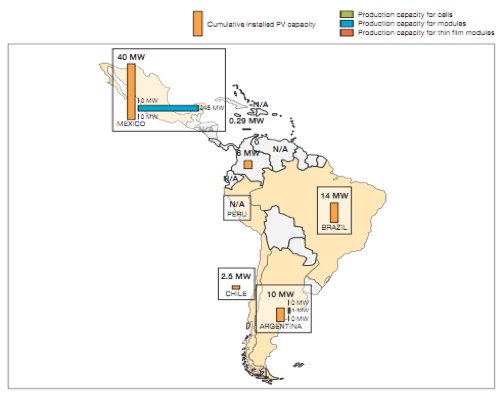
- Recent Trend and Resources Potentials for wind and solar in Latin America
- Policy driver and Policy landscape
- Challenges going forward
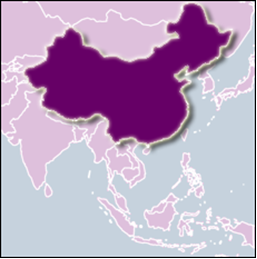 China
has experienced remarkable rates of industrial and
economic growth over the past several years. After
the establishment of the Chinese state, the communist
goverments of Mao Zedong and Deng Ziaoping took significant
steps focused on the industrial development of the
country. China
has experienced remarkable rates of industrial and
economic growth over the past several years. After
the establishment of the Chinese state, the communist
goverments of Mao Zedong and Deng Ziaoping took significant
steps focused on the industrial development of the
country.
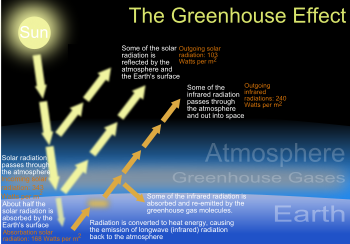 The
CDM is only one of the Kyoto Protocol tools. CDM projects
might act as catalysts to spread new technologies
and make them profitable without assistance. It is
not the complete answer to climate change but combined
together with other solutions, it will lead to an
effective decrease of world GHG emissions. This report
shows registered CDM projects around the world to
March 2006. The
CDM is only one of the Kyoto Protocol tools. CDM projects
might act as catalysts to spread new technologies
and make them profitable without assistance. It is
not the complete answer to climate change but combined
together with other solutions, it will lead to an
effective decrease of world GHG emissions. This report
shows registered CDM projects around the world to
March 2006.
Cross-border interconnected grids are key infrastructure
that positively affect the development process between
neighboring countries. They provide links between
the electricity transmission systems
of two or more adjoining countries and, thus,
allow those countries to share power generation resources.
Australia ranks among the highest nations in the
world for per capita greenhouse gas emissions;
its energy capacity is mostly made up of fossil fuels,
and it is one of the largest exporters of coal and
uranium. In contrast, Australia boasts vast wind and
solar energy resources that could be potentially exploited.
This paper examines the economic argument for Australia
to make changes in its energy consumption and mineral
exports and take advantage of its potential by pursuing
zero emissions renewable energy policies.
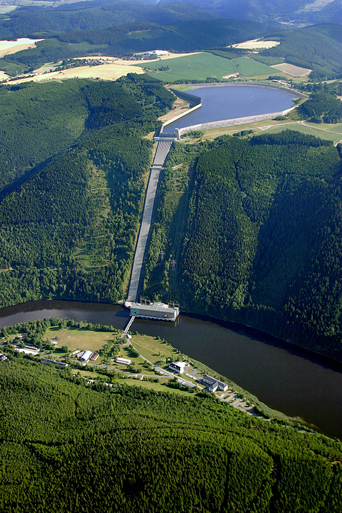 In
the following chapters, I introduce
some basic knowledge of power grids, the most important
storage technologies so far, as well as a critical
observation of their benefits, problems and possible
impacts in the future; and a small glance at promising
technologies still in their development and pilot
phases. In
the following chapters, I introduce
some basic knowledge of power grids, the most important
storage technologies so far, as well as a critical
observation of their benefits, problems and possible
impacts in the future; and a small glance at promising
technologies still in their development and pilot
phases.
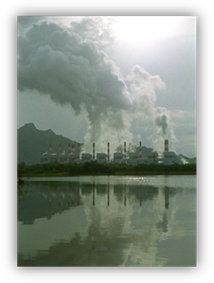 Now that a multitude of evidence is available that
demonstrates the hazardous effects of coal-based
energy, Southeast Asian nations must take advantage
of insight that is now available due to their own
and other nations’ energy usage mistakes. Now that a multitude of evidence is available that
demonstrates the hazardous effects of coal-based
energy, Southeast Asian nations must take advantage
of insight that is now available due to their own
and other nations’ energy usage mistakes.
The renewable energy supply in Southeast Asia has
the capacity to generate electricity for all of the
regions’ nations and to bring electrification
to rural areas through the ASEAN Power Grid.
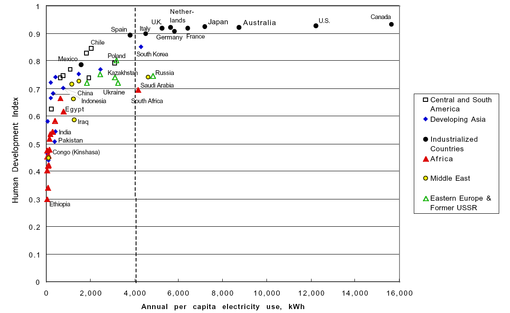 The
objective of this paper is to show that increasing
electricity consumption per capita can achieve improved
social development and faster economic growth. The
objective of this paper is to show that increasing
electricity consumption per capita can achieve improved
social development and faster economic growth.
 Overall,
the results of the study give a positive indication
that hydrogen can be used in the
electric power sector. The consequences will be highly
beneficial not only to mitigate the emissions problem
but also to encourage the utilization of more renewable
resources to produce hydrogen. Overall,
the results of the study give a positive indication
that hydrogen can be used in the
electric power sector. The consequences will be highly
beneficial not only to mitigate the emissions problem
but also to encourage the utilization of more renewable
resources to produce hydrogen.
 California is in the midst of a water crisis. By
consensus estimates, climate change is poised to
intensify this crisis in the coming years. Our water
delivery and conservation strategies are outdated
and structurally failing. California’s population
is projected to rise at an alarming rate. More people
mean less available water. California is in the midst of a water crisis. By
consensus estimates, climate change is poised to
intensify this crisis in the coming years. Our water
delivery and conservation strategies are outdated
and structurally failing. California’s population
is projected to rise at an alarming rate. More people
mean less available water.
How should policy makers and water planners tackle
these issues?
 This report focuses on how 100% renewable energy
in Japan is possible by 2020. Japan is now in a
severe condition with their energy because of the
2011 nuclear power plant disaster caused by earthquake
and tsunami. Since then, Japan has struggled to
manage its energy in peak times. To solve this
problem, the Japanese government and people are
trying to shift their energy to renewable sources.
So far, achieving this goal has been exceedingly
low, even if it is possible. Despite this outcome,
this report takes a strong position on energy issues.
The purpose of this report is to demonstrate the
feasibility of 100% renewable energy for Japan
to decision makers, political leaders and the public. This report focuses on how 100% renewable energy
in Japan is possible by 2020. Japan is now in a
severe condition with their energy because of the
2011 nuclear power plant disaster caused by earthquake
and tsunami. Since then, Japan has struggled to
manage its energy in peak times. To solve this
problem, the Japanese government and people are
trying to shift their energy to renewable sources.
So far, achieving this goal has been exceedingly
low, even if it is possible. Despite this outcome,
this report takes a strong position on energy issues.
The purpose of this report is to demonstrate the
feasibility of 100% renewable energy for Japan
to decision makers, political leaders and the public.
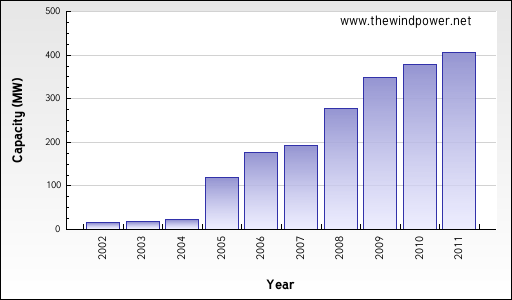 South Korea is a country without many primary resources; the country
imports most of its energy. It is one of the 5 biggest importers of
fuel fossil energy in the world. To be less dependent on foreign countries
includes reducing these imports, so the part played by using renewable
energy has to be increased. Moreover, the greenhouse gases emissions
have to be reduced or at least the rise of such emissions has to be
stopped. South Korea is a country without many primary resources; the country
imports most of its energy. It is one of the 5 biggest importers of
fuel fossil energy in the world. To be less dependent on foreign countries
includes reducing these imports, so the part played by using renewable
energy has to be increased. Moreover, the greenhouse gases emissions
have to be reduced or at least the rise of such emissions has to be
stopped.
 Turkey is capable of obtaining 100% renewable energy by 2020. In 1970, the renewable energies could meet about 35% of demand. while in 2010, 10% of current demand was met with renewable energy. Current and even future electricity demand for 2020 could easily be met with renewable energies for an economically feasible situation. Even the primary energy demand could be covered by renewable energies, if sufficiently exploited! The transition from a fossil fuel based energy system to a renewable energy system is possible, if more commitment is shown. Turkey is capable of obtaining 100% renewable energy by 2020. In 1970, the renewable energies could meet about 35% of demand. while in 2010, 10% of current demand was met with renewable energy. Current and even future electricity demand for 2020 could easily be met with renewable energies for an economically feasible situation. Even the primary energy demand could be covered by renewable energies, if sufficiently exploited! The transition from a fossil fuel based energy system to a renewable energy system is possible, if more commitment is shown.
 California is in the midst of a water crisis. By
The Republic of Chile has energy shortages and needs energy.
Key factors have contributed to this shortage throughout the past decade, including limited indigenous fossil fuels,
droughts and a natural gas shortage from Argentina in 2004. In addition to energy shortages,
Chile is experiencing economic and population growth. The investment in a renewable energy mix is a high priority to provide a more secure energy supply,
to reduce greenhouse emissions and to supply sustainable and healthier energy. California is in the midst of a water crisis. By
The Republic of Chile has energy shortages and needs energy.
Key factors have contributed to this shortage throughout the past decade, including limited indigenous fossil fuels,
droughts and a natural gas shortage from Argentina in 2004. In addition to energy shortages,
Chile is experiencing economic and population growth. The investment in a renewable energy mix is a high priority to provide a more secure energy supply,
to reduce greenhouse emissions and to supply sustainable and healthier energy.
 This report focuses on the analysis of various groups reviewing the renewable energy
potential within France. While those plans have focused on bringing the country to 23%
renewable energy by 2020, this report takes a more agressive view. It raises the
possibility of having France’s electricity powered by 100% renewable energy at the
earliest possible date.
This report focuses on the analysis of various groups reviewing the renewable energy
potential within France. While those plans have focused on bringing the country to 23%
renewable energy by 2020, this report takes a more agressive view. It raises the
possibility of having France’s electricity powered by 100% renewable energy at the
earliest possible date.
 This report focuses on how and whether it is
possible for Germany to have all of its electricity generated by renewable power plants within the next ten years.
It is fairly obvious that if possible, the chances of fruition are extremely low. Nevertheless is it extremely important to show decision makers and leaders the high potential,
technology and possibility of green energy in Germany. This report focuses on how and whether it is
possible for Germany to have all of its electricity generated by renewable power plants within the next ten years.
It is fairly obvious that if possible, the chances of fruition are extremely low. Nevertheless is it extremely important to show decision makers and leaders the high potential,
technology and possibility of green energy in Germany.
 This paper posits that Spain
is theoretically capable of obtaining 100% renewable energy by 2020 -- theoretically only
because of the logistical issues involved. Also, Spain's slow recovery from the 2008 global
recession has caused some reticence about additional spending. Even with the previously
mentioned factors though, Spain does have other features that enable them to reach 100%
renewable energy. Spain has a well-established foundation. Again, 35% of demand was met
with renewable energy. The installed capacity of renewable energy is constantly increasing.
Spain's renewable resources provide great potential for the generation of energy.
Some policies have been created to promote and facilitate the usage of renewables. This paper posits that Spain
is theoretically capable of obtaining 100% renewable energy by 2020 -- theoretically only
because of the logistical issues involved. Also, Spain's slow recovery from the 2008 global
recession has caused some reticence about additional spending. Even with the previously
mentioned factors though, Spain does have other features that enable them to reach 100%
renewable energy. Spain has a well-established foundation. Again, 35% of demand was met
with renewable energy. The installed capacity of renewable energy is constantly increasing.
Spain's renewable resources provide great potential for the generation of energy.
Some policies have been created to promote and facilitate the usage of renewables.
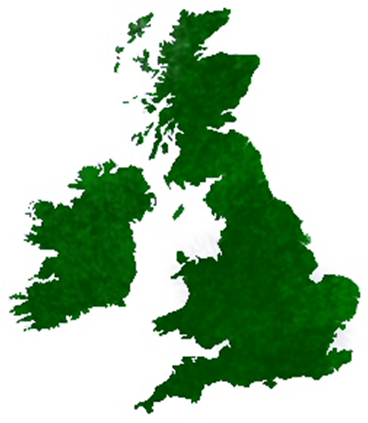 The UK has a rich source
of wind and marine energy that theoretically can
meet the current worldwide demand many times over using just this resource.
In fact, this report
concludes that it is possible for the UK to become
100% renewable by 2020. More than enough resources and technology already
exist to make
this happen. The decisions made over the next few
years must be the right ones to ensure a sustainable future. The UK has a rich source
of wind and marine energy that theoretically can
meet the current worldwide demand many times over using just this resource.
In fact, this report
concludes that it is possible for the UK to become
100% renewable by 2020. More than enough resources and technology already
exist to make
this happen. The decisions made over the next few
years must be the right ones to ensure a sustainable future.
 Access
to affordable clean electricity is fundamental to
daily life and any level of socio-economic development.
Because it is central to all aspects of our lives
- lighting, heating, pumping and purification of water,
agricultural productivity, refrigeration of food and
medicines, sterilization of equipment and many others
- there is an essential correlation between access
to electricity and quality of life. Access
to affordable clean electricity is fundamental to
daily life and any level of socio-economic development.
Because it is central to all aspects of our lives
- lighting, heating, pumping and purification of water,
agricultural productivity, refrigeration of food and
medicines, sterilization of equipment and many others
- there is an essential correlation between access
to electricity and quality of life.
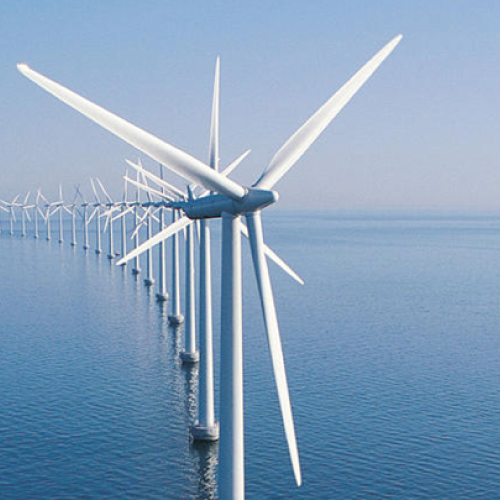 The concept of Supergrid was initiated 10 years
ago and it can be defined as "a pan-European
transmission network facilitating the integration
of large-scale renewable energy and the balancing
and transportation of electricity, with the aim of
improving the European market." The concept of Supergrid was initiated 10 years
ago and it can be defined as "a pan-European
transmission network facilitating the integration
of large-scale renewable energy and the balancing
and transportation of electricity, with the aim of
improving the European market."
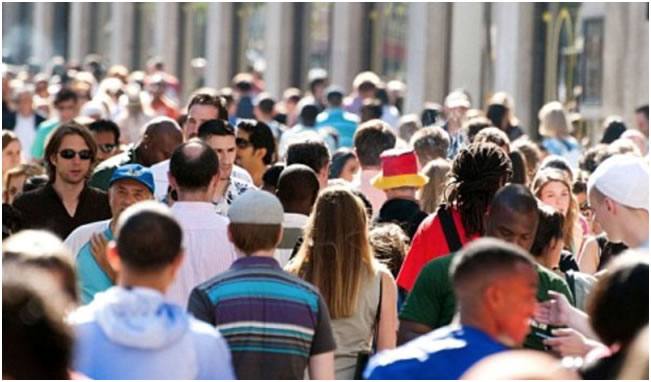 An overview of past and current population growth trends is provided
here, as well as forecasts for future growth based on these trends.
The current population explosions in developing and some developed
regions can be attributed to inadequate access to birth control, large
desired family size, and other social factors that vary over time and
space. These factors are explored with a look at what the densely
inhabited Earth of the future may be like if solutions to
overpopulation are not actively pursued. The case for a global energy
network is solidified with data provided to support a positive
correlation between electrification and decreased fertility. An overview of past and current population growth trends is provided
here, as well as forecasts for future growth based on these trends.
The current population explosions in developing and some developed
regions can be attributed to inadequate access to birth control, large
desired family size, and other social factors that vary over time and
space. These factors are explored with a look at what the densely
inhabited Earth of the future may be like if solutions to
overpopulation are not actively pursued. The case for a global energy
network is solidified with data provided to support a positive
correlation between electrification and decreased fertility.
The Energy Policies of Presidential Candidates Obama
and McCain (US 2008) are compared and additionally
compared to several world experts in energy as well
as to the GENI Initiative.
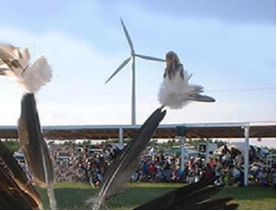 Native
American tribal lands contain enormous potential for
renewable energy. Developing tribal renewable energy
could provide them with steady revenue and drive the
development of the tribal infrastructure necessary
for the tribes to complete large projects. Native
American tribal lands contain enormous potential for
renewable energy. Developing tribal renewable energy
could provide them with steady revenue and drive the
development of the tribal infrastructure necessary
for the tribes to complete large projects.
 Argentina
has great potential for renewables, mainly due to
its varied geography and climate throughout the country.
An example would be that wind power farms could be
installed in more than half of Argentina's Natural
Territory. Argentina
has great potential for renewables, mainly due to
its varied geography and climate throughout the country.
An example would be that wind power farms could be
installed in more than half of Argentina's Natural
Territory.
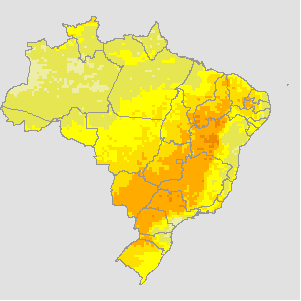 Brazil is one of the fastest growing countries in
the world, and their energy
consumption is following this same trajectory. The
South American country has a choice between developing from mostly
conventional energy, as developed Brazil is one of the fastest growing countries in
the world, and their energy
consumption is following this same trajectory. The
South American country has a choice between developing from mostly
conventional energy, as developed
countries have done before, or choosing a more environmentally
friendly way by developing renewable energies.
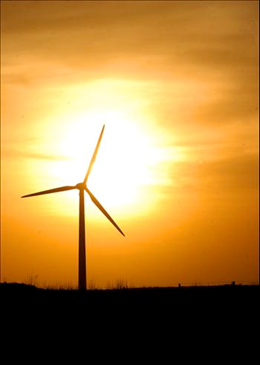 China
possesses enormous potential for the development of
renewable energy. The government has recently set
targets to be reached by 2010 and 2020 for installed
generating capacity. The two main sources of renewable
energy for China will be from hydropower and wind
power. China
possesses enormous potential for the development of
renewable energy. The government has recently set
targets to be reached by 2010 and 2020 for installed
generating capacity. The two main sources of renewable
energy for China will be from hydropower and wind
power.
 This
report gives an overview of the renewable energies
market in India. We look at the current status of
renewable markets in India, the energy needs of the
country, forecasts of consumption and production,
and we assess whether India can power its growth and
its society with renewable resources. This
report gives an overview of the renewable energies
market in India. We look at the current status of
renewable markets in India, the energy needs of the
country, forecasts of consumption and production,
and we assess whether India can power its growth and
its society with renewable resources.
This paper proposes that integration of enhanced electrical capacity realized through a
large-scale integration of renewable energy resources, such as wind and solar energy, in the
Indian electrical grid can lead to a smarter grid platform. This will ensure increased
efficiency, reliability, and security, as well as a dynamic programable renewable resource
mobilization in India leading to energy independence and an electrical grid that is much more
reliable, secure, efficient, and greener. Presentation
 The
focus of this paper is to give an overview of the
potential of renewable energy of every country in
Latin America. Five different types of renewable energy
resources exist: solar power, wind power, hydro power,
geothermal and biomass. The purpose of this work is
to contribute to the development of the widespread
use of these renewable energy sources to counter the
increasing concentrations of greenhouse gases, carbon
dioxide and several other gases in smaller amounts
such as methane and nitrous oxide, whose effects cause
global warming. The
focus of this paper is to give an overview of the
potential of renewable energy of every country in
Latin America. Five different types of renewable energy
resources exist: solar power, wind power, hydro power,
geothermal and biomass. The purpose of this work is
to contribute to the development of the widespread
use of these renewable energy sources to counter the
increasing concentrations of greenhouse gases, carbon
dioxide and several other gases in smaller amounts
such as methane and nitrous oxide, whose effects cause
global warming.
 Solar
energy has the potential to equip the Middle East
with centuries of sustainable, clean electricity.
A solar power plant the size of Lake Masser has the
capacity of supplying the electiricty needs of the
entire region. Solar
energy has the potential to equip the Middle East
with centuries of sustainable, clean electricity.
A solar power plant the size of Lake Masser has the
capacity of supplying the electiricty needs of the
entire region.
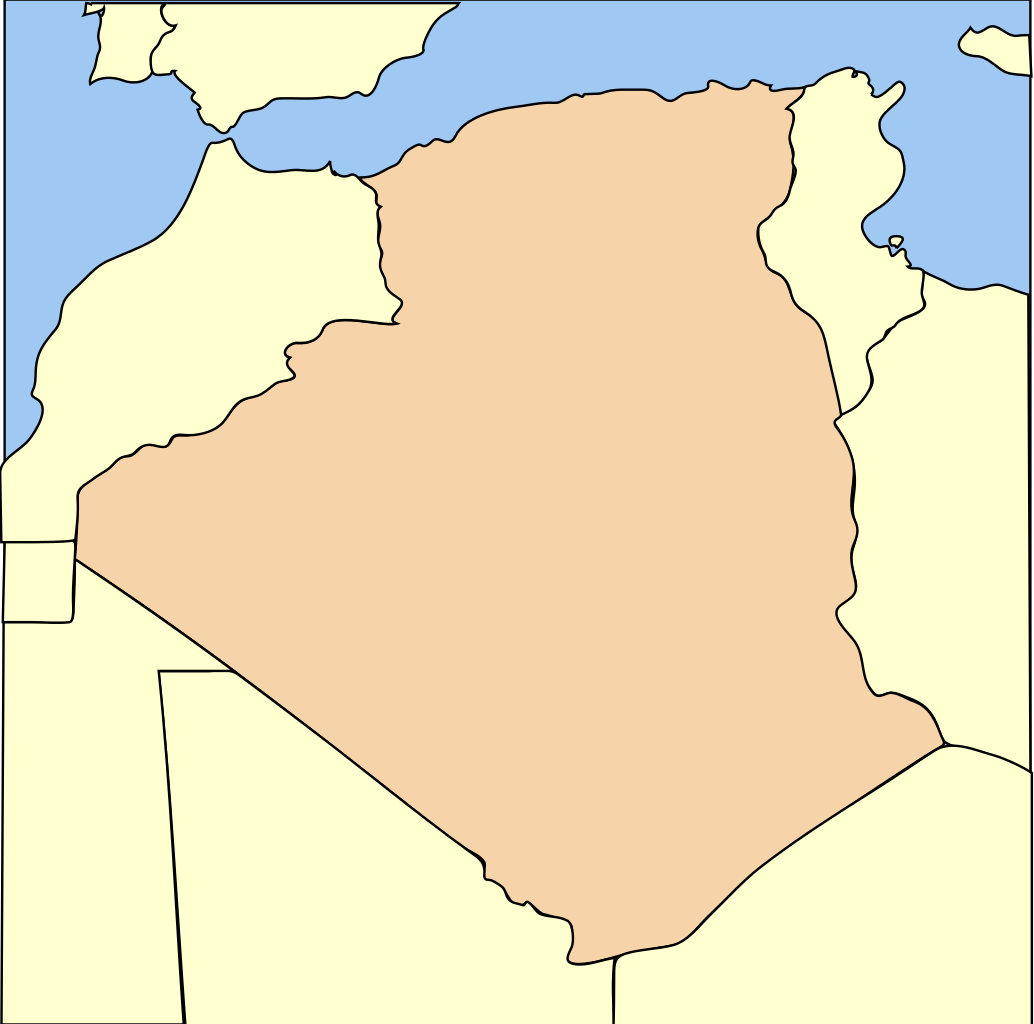 Solar
energy has the potential to equip Algeria
with centuries of sustainable, clean electricity. Algeria is capable of being one of the leading countries in the energy supply business. Not just that, but for it to easily operate completely
on green energy using renewable and alternative resources for energy extraction. Solar
energy has the potential to equip Algeria
with centuries of sustainable, clean electricity. Algeria is capable of being one of the leading countries in the energy supply business. Not just that, but for it to easily operate completely
on green energy using renewable and alternative resources for energy extraction.
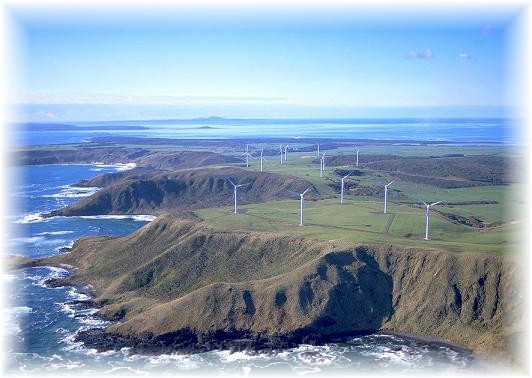 In this document, you will find information on the energy potential on Small Islands States. On each page of this PDF format, you will find a consistent listing of renewable resource features presented for each Island. In this document, you will find information on the energy potential on Small Islands States. On each page of this PDF format, you will find a consistent listing of renewable resource features presented for each Island.
 Nowadays there are several major directions for
solar technology development. To choose the right
solar system for a specific geographic location,
we want to understand and compare the basic mechanisms
and general operation functions of several solar
technologies that are widely studied. This paper
not only gives a brief introduction about the fast
developing solar technologies industry, but it may
also help us avoid long term switching cost in the
future and make the solar systems performance more
efficient, economical and stable. Nowadays there are several major directions for
solar technology development. To choose the right
solar system for a specific geographic location,
we want to understand and compare the basic mechanisms
and general operation functions of several solar
technologies that are widely studied. This paper
not only gives a brief introduction about the fast
developing solar technologies industry, but it may
also help us avoid long term switching cost in the
future and make the solar systems performance more
efficient, economical and stable.
 Rural
Electrification contains case studies, personal stories
and more on the 2.8 billion people that live on less
than $2 a day. Rural
Electrification contains case studies, personal stories
and more on the 2.8 billion people that live on less
than $2 a day.
 This
project focuses on micro-level village sustainable
energy, specifically on electricity. The main question
is, "how do we electrify villages in Afghanistan using
renewable energy?" The paper shows that most problems
that exist in rural areas of Afghanistan, such as
poverty, healthcare, drug trade, and deforestation,
are linked to the lack of access to electricity. The
challenge is to find and describe different ways of
solving these problems. This
project focuses on micro-level village sustainable
energy, specifically on electricity. The main question
is, "how do we electrify villages in Afghanistan using
renewable energy?" The paper shows that most problems
that exist in rural areas of Afghanistan, such as
poverty, healthcare, drug trade, and deforestation,
are linked to the lack of access to electricity. The
challenge is to find and describe different ways of
solving these problems.
 This
report focuses on the analysis of various groups researching
the renewable energy potential within the San Diego
Region. While those plans in San Diego's Regional
Energy Strategy (RES) focused on bringing San Diego
County to 40% renewable energy by 20301 , this report
looks further. In a clear and concise manner, it attempts
to raise the possibility of having our electricity
powered by 100% renewable energy. This
report focuses on the analysis of various groups researching
the renewable energy potential within the San Diego
Region. While those plans in San Diego's Regional
Energy Strategy (RES) focused on bringing San Diego
County to 40% renewable energy by 20301 , this report
looks further. In a clear and concise manner, it attempts
to raise the possibility of having our electricity
powered by 100% renewable energy.
 But in the case of the Middle East and North Africa countries, which
are relatively free of infrastructure, it is possible to consider all
options of development. The gigantic solar resource of the Sahara Desert
is inexhaustible, freely accessible and will be more widely developed.
We compare this to the nuclear reaction which needs uranium, is a non-renewable
resource and will cost much more due to its scarcity. But in the case of the Middle East and North Africa countries, which
are relatively free of infrastructure, it is possible to consider all
options of development. The gigantic solar resource of the Sahara Desert
is inexhaustible, freely accessible and will be more widely developed.
We compare this to the nuclear reaction which needs uranium, is a non-renewable
resource and will cost much more due to its scarcity.
 Today there is a large problem of energy resources so we need to develop the emergent technologies and to show people that those technologies are ready for use.The goal of this report is to highlight solar water heaters, their technology, use and cost/ benefit. The first part of the report presents the technical features of the solar water heater. It then deals with the economic aspects, the cost of the solar water heater, the energy created and a comparison between the electric water heater and the solar water heater. This is followed by a hypothesis of a large scale set up and then concludes with the benefits of solar water heaters. Today there is a large problem of energy resources so we need to develop the emergent technologies and to show people that those technologies are ready for use.The goal of this report is to highlight solar water heaters, their technology, use and cost/ benefit. The first part of the report presents the technical features of the solar water heater. It then deals with the economic aspects, the cost of the solar water heater, the energy created and a comparison between the electric water heater and the solar water heater. This is followed by a hypothesis of a large scale set up and then concludes with the benefits of solar water heaters.
 This paper investigates ways to retrofit high raise commercial buildings into outstanding sustainable buildings. Looking up in the middle of the busiest cities in the world, we can barely see the sky for the skyscrapers. High rise buildings are cool and modern, but they generate 16 percent of the energy consumption worldwide and 40 percent of the total energy consumptions in the U.S. Carbon dioxide emissions from buildings account for 40% of the total generation of carbon dioxide emissions in the U.S. and cost $100 billion annually. Due to global population growth, more energy will be consumed annually; hence, the tremendous release of greenhouse gases will further increase exponentially with the population. Therefore, reducing green house gas emissions is an emergency. This paper investigates ways to retrofit high raise commercial buildings into outstanding sustainable buildings. Looking up in the middle of the busiest cities in the world, we can barely see the sky for the skyscrapers. High rise buildings are cool and modern, but they generate 16 percent of the energy consumption worldwide and 40 percent of the total energy consumptions in the U.S. Carbon dioxide emissions from buildings account for 40% of the total generation of carbon dioxide emissions in the U.S. and cost $100 billion annually. Due to global population growth, more energy will be consumed annually; hence, the tremendous release of greenhouse gases will further increase exponentially with the population. Therefore, reducing green house gas emissions is an emergency.
 The aim of this paper is to understand the current
status of the San Diego transportation system and,
by the analyses of viable development, implementation
and alternatives, suggest possible solutions to improve
its reliability and sustainability. Due to the diversity
of the topics studied, considerations are carried
along chapter by chapter for a more fluent discussion. The aim of this paper is to understand the current
status of the San Diego transportation system and,
by the analyses of viable development, implementation
and alternatives, suggest possible solutions to improve
its reliability and sustainability. Due to the diversity
of the topics studied, considerations are carried
along chapter by chapter for a more fluent discussion.
 Energy
transmission plays a key role in today’s
energy industry, because it is the system by which
energy is sent to customers and end-users. Without
it, generators would not be able to distribution
companies would not be able to bring power from utility
plants
to distribution lines to send power to consumers.
Tthe focus of this paper is to identify the policy
drivers
for and barriers to transmission development, explain
the policy issues and how those issues are currently
being addressed, and outline some proposed policies. Energy
transmission plays a key role in today’s
energy industry, because it is the system by which
energy is sent to customers and end-users. Without
it, generators would not be able to distribution
companies would not be able to bring power from utility
plants
to distribution lines to send power to consumers.
Tthe focus of this paper is to identify the policy
drivers
for and barriers to transmission development, explain
the policy issues and how those issues are currently
being addressed, and outline some proposed policies.
 A
Study of Very Large Solar Desert Systems with the
Requirements and Benefits to those Nations Having
High Solar Irradiation Potenial A
Study of Very Large Solar Desert Systems with the
Requirements and Benefits to those Nations Having
High Solar Irradiation Potenial
 The Amu Darya River is the only source of water
for the four countries and regions through which
it passes: Tajikistan, northern Afghanistan, Turkmenistan,
and Uzbekistan. In recent decades, the expansion
of agriculture has put extreme strain on the surface
waters and groundwater reserves. If planned expansion
of agriculture continues, the Amu Darya River Basin
is at risk of extreme drought, resulting in both
economic and human crises. This crisis of resources
is closely linked to the energy crisis in which millions
of people in the Amu Darya River Basin do not have
access to clean and reliable electricity. This is
called the water-energy nexus. In order to ensure
its survival as a region in the face of climate change
and economic growth, cooperation between these four
states is urgent. I suggest that Afghanistan and
the three Central Asian Republics do as follows... The Amu Darya River is the only source of water
for the four countries and regions through which
it passes: Tajikistan, northern Afghanistan, Turkmenistan,
and Uzbekistan. In recent decades, the expansion
of agriculture has put extreme strain on the surface
waters and groundwater reserves. If planned expansion
of agriculture continues, the Amu Darya River Basin
is at risk of extreme drought, resulting in both
economic and human crises. This crisis of resources
is closely linked to the energy crisis in which millions
of people in the Amu Darya River Basin do not have
access to clean and reliable electricity. This is
called the water-energy nexus. In order to ensure
its survival as a region in the face of climate change
and economic growth, cooperation between these four
states is urgent. I suggest that Afghanistan and
the three Central Asian Republics do as follows...
 In light of the many social, environmental, and
political benefits that can be realized through sustainable
development in the Jordan River Basin, this report
concludes with three broad policy recommendations
for future development in the region. This section
is not meant to be an exhaustive list of all necessary
policies, but rather a starting point for future
discussions to achieve more complementary, equitable,
and sustainable management of limited water and energy
resources within the Jordan River Basin. In light of the many social, environmental, and
political benefits that can be realized through sustainable
development in the Jordan River Basin, this report
concludes with three broad policy recommendations
for future development in the region. This section
is not meant to be an exhaustive list of all necessary
policies, but rather a starting point for future
discussions to achieve more complementary, equitable,
and sustainable management of limited water and energy
resources within the Jordan River Basin.
 The
new waste-to-energy plants are cleaner and more
efficient
than older models and can generate a fair amount
of energy. This energy, in the form of heat and/or
electricity,
can be used not only to power the plants themselves,
but can return a portion to the electrical grid
as
well. The
new waste-to-energy plants are cleaner and more
efficient
than older models and can generate a fair amount
of energy. This energy, in the form of heat and/or
electricity,
can be used not only to power the plants themselves,
but can return a portion to the electrical grid
as
well.
 The purpose of this report is to give investors
a better idea of which turbine is suitable for a
particular setting and to provide a new outlook on
vertical-axis wind turbines. Vertical-axis wind turbines
are more compact and suitable for residential and
commercial areas while horizontal-axis wind turbines
are more suitable for wind farms in rural areas or
offshore. However, technological advances in vertical-axis
wind turbines that are able to generate more energy
with a smaller footprint are now challenging the
traditional use of horizontal wind turbines in wind
farms. Wind technology has grown substantially since
its original use as a method to grind grains and
will only continue to grow. The purpose of this report is to give investors
a better idea of which turbine is suitable for a
particular setting and to provide a new outlook on
vertical-axis wind turbines. Vertical-axis wind turbines
are more compact and suitable for residential and
commercial areas while horizontal-axis wind turbines
are more suitable for wind farms in rural areas or
offshore. However, technological advances in vertical-axis
wind turbines that are able to generate more energy
with a smaller footprint are now challenging the
traditional use of horizontal wind turbines in wind
farms. Wind technology has grown substantially since
its original use as a method to grind grains and
will only continue to grow.
| 
 The
region is wealthy in renewable resources and is poised
to restructure its energy sectors, particularly in
electricity generation, so as to be renewables-based.
Developing renewables-based energy sectors has become
central to the economic, development, and poverty
alleviation strategies of all Central American countries.
Regional interconnection and integration present
a mechanism for the region to work together to increase
economic and energy security, decrease reliance on
foreign oil, develop with green economies, and decrease
poverty.
The
region is wealthy in renewable resources and is poised
to restructure its energy sectors, particularly in
electricity generation, so as to be renewables-based.
Developing renewables-based energy sectors has become
central to the economic, development, and poverty
alleviation strategies of all Central American countries.
Regional interconnection and integration present
a mechanism for the region to work together to increase
economic and energy security, decrease reliance on
foreign oil, develop with green economies, and decrease
poverty.
 China
has experienced remarkable rates of industrial and
economic growth over the past several years. After
the establishment of the Chinese state, the communist
goverments of Mao Zedong and Deng Ziaoping took significant
steps focused on the industrial development of the
country.
China
has experienced remarkable rates of industrial and
economic growth over the past several years. After
the establishment of the Chinese state, the communist
goverments of Mao Zedong and Deng Ziaoping took significant
steps focused on the industrial development of the
country. The
CDM is only one of the Kyoto Protocol tools. CDM projects
might act as catalysts to spread new technologies
and make them profitable without assistance. It is
not the complete answer to climate change but combined
together with other solutions, it will lead to an
effective decrease of world GHG emissions. This report
shows registered CDM projects around the world to
March 2006.
The
CDM is only one of the Kyoto Protocol tools. CDM projects
might act as catalysts to spread new technologies
and make them profitable without assistance. It is
not the complete answer to climate change but combined
together with other solutions, it will lead to an
effective decrease of world GHG emissions. This report
shows registered CDM projects around the world to
March 2006.  Cross-Border
Interconnections
Cross-Border
Interconnections An Econonic Argument for Adopting a Zero Emission Energy Policy in Australia
An Econonic Argument for Adopting a Zero Emission Energy Policy in Australia In
the following chapters, I introduce
some basic knowledge of power grids, the most important
storage technologies so far, as well as a critical
observation of their benefits, problems and possible
impacts in the future; and a small glance at promising
technologies still in their development and pilot
phases.
In
the following chapters, I introduce
some basic knowledge of power grids, the most important
storage technologies so far, as well as a critical
observation of their benefits, problems and possible
impacts in the future; and a small glance at promising
technologies still in their development and pilot
phases. Now that a multitude of evidence is available that
demonstrates the hazardous effects of coal-based
energy, Southeast Asian nations must take advantage
of insight that is now available due to their own
and other nations’ energy usage mistakes.
Now that a multitude of evidence is available that
demonstrates the hazardous effects of coal-based
energy, Southeast Asian nations must take advantage
of insight that is now available due to their own
and other nations’ energy usage mistakes.  The
objective of this paper is to show that increasing
electricity consumption per capita can achieve improved
social development and faster economic growth.
The
objective of this paper is to show that increasing
electricity consumption per capita can achieve improved
social development and faster economic growth.  Overall,
the results of the study give a positive indication
that hydrogen can be used in the
electric power sector. The consequences will be highly
beneficial not only to mitigate the emissions problem
but also to encourage the utilization of more renewable
resources to produce hydrogen.
Overall,
the results of the study give a positive indication
that hydrogen can be used in the
electric power sector. The consequences will be highly
beneficial not only to mitigate the emissions problem
but also to encourage the utilization of more renewable
resources to produce hydrogen. California is in the midst of a water crisis. By
consensus estimates, climate change is poised to
intensify this crisis in the coming years. Our water
delivery and conservation strategies are outdated
and structurally failing. California’s population
is projected to rise at an alarming rate. More people
mean less available water.
California is in the midst of a water crisis. By
consensus estimates, climate change is poised to
intensify this crisis in the coming years. Our water
delivery and conservation strategies are outdated
and structurally failing. California’s population
is projected to rise at an alarming rate. More people
mean less available water. This report focuses on how 100% renewable energy
in Japan is possible by 2020. Japan is now in a
severe condition with their energy because of the
2011 nuclear power plant disaster caused by earthquake
and tsunami. Since then, Japan has struggled to
manage its energy in peak times. To solve this
problem, the Japanese government and people are
trying to shift their energy to renewable sources.
So far, achieving this goal has been exceedingly
low, even if it is possible. Despite this outcome,
this report takes a strong position on energy issues.
The purpose of this report is to demonstrate the
feasibility of 100% renewable energy for Japan
to decision makers, political leaders and the public.
This report focuses on how 100% renewable energy
in Japan is possible by 2020. Japan is now in a
severe condition with their energy because of the
2011 nuclear power plant disaster caused by earthquake
and tsunami. Since then, Japan has struggled to
manage its energy in peak times. To solve this
problem, the Japanese government and people are
trying to shift their energy to renewable sources.
So far, achieving this goal has been exceedingly
low, even if it is possible. Despite this outcome,
this report takes a strong position on energy issues.
The purpose of this report is to demonstrate the
feasibility of 100% renewable energy for Japan
to decision makers, political leaders and the public.
 South Korea is a country without many primary resources; the country
imports most of its energy. It is one of the 5 biggest importers of
fuel fossil energy in the world. To be less dependent on foreign countries
includes reducing these imports, so the part played by using renewable
energy has to be increased. Moreover, the greenhouse gases emissions
have to be reduced or at least the rise of such emissions has to be
stopped.
South Korea is a country without many primary resources; the country
imports most of its energy. It is one of the 5 biggest importers of
fuel fossil energy in the world. To be less dependent on foreign countries
includes reducing these imports, so the part played by using renewable
energy has to be increased. Moreover, the greenhouse gases emissions
have to be reduced or at least the rise of such emissions has to be
stopped.  Turkey is capable of obtaining 100% renewable energy by 2020. In 1970, the renewable energies could meet about 35% of demand. while in 2010, 10% of current demand was met with renewable energy. Current and even future electricity demand for 2020 could easily be met with renewable energies for an economically feasible situation. Even the primary energy demand could be covered by renewable energies, if sufficiently exploited! The transition from a fossil fuel based energy system to a renewable energy system is possible, if more commitment is shown.
Turkey is capable of obtaining 100% renewable energy by 2020. In 1970, the renewable energies could meet about 35% of demand. while in 2010, 10% of current demand was met with renewable energy. Current and even future electricity demand for 2020 could easily be met with renewable energies for an economically feasible situation. Even the primary energy demand could be covered by renewable energies, if sufficiently exploited! The transition from a fossil fuel based energy system to a renewable energy system is possible, if more commitment is shown. California is in the midst of a water crisis. By
The Republic of Chile has energy shortages and needs energy.
Key factors have contributed to this shortage throughout the past decade, including limited indigenous fossil fuels,
droughts and a natural gas shortage from Argentina in 2004. In addition to energy shortages,
Chile is experiencing economic and population growth. The investment in a renewable energy mix is a high priority to provide a more secure energy supply,
to reduce greenhouse emissions and to supply sustainable and healthier energy.
California is in the midst of a water crisis. By
The Republic of Chile has energy shortages and needs energy.
Key factors have contributed to this shortage throughout the past decade, including limited indigenous fossil fuels,
droughts and a natural gas shortage from Argentina in 2004. In addition to energy shortages,
Chile is experiencing economic and population growth. The investment in a renewable energy mix is a high priority to provide a more secure energy supply,
to reduce greenhouse emissions and to supply sustainable and healthier energy. This report focuses on the analysis of various groups reviewing the renewable energy
potential within France. While those plans have focused on bringing the country to 23%
renewable energy by 2020, this report takes a more agressive view. It raises the
possibility of having France’s electricity powered by 100% renewable energy at the
earliest possible date.
This report focuses on the analysis of various groups reviewing the renewable energy
potential within France. While those plans have focused on bringing the country to 23%
renewable energy by 2020, this report takes a more agressive view. It raises the
possibility of having France’s electricity powered by 100% renewable energy at the
earliest possible date. This report focuses on how and whether it is
possible for Germany to have all of its electricity generated by renewable power plants within the next ten years.
It is fairly obvious that if possible, the chances of fruition are extremely low. Nevertheless is it extremely important to show decision makers and leaders the high potential,
technology and possibility of green energy in Germany.
This report focuses on how and whether it is
possible for Germany to have all of its electricity generated by renewable power plants within the next ten years.
It is fairly obvious that if possible, the chances of fruition are extremely low. Nevertheless is it extremely important to show decision makers and leaders the high potential,
technology and possibility of green energy in Germany. This paper posits that Spain
is theoretically capable of obtaining 100% renewable energy by 2020 -- theoretically only
because of the logistical issues involved. Also, Spain's slow recovery from the 2008 global
recession has caused some reticence about additional spending. Even with the previously
mentioned factors though, Spain does have other features that enable them to reach 100%
renewable energy. Spain has a well-established foundation. Again, 35% of demand was met
with renewable energy. The installed capacity of renewable energy is constantly increasing.
Spain's renewable resources provide great potential for the generation of energy.
Some policies have been created to promote and facilitate the usage of renewables.
This paper posits that Spain
is theoretically capable of obtaining 100% renewable energy by 2020 -- theoretically only
because of the logistical issues involved. Also, Spain's slow recovery from the 2008 global
recession has caused some reticence about additional spending. Even with the previously
mentioned factors though, Spain does have other features that enable them to reach 100%
renewable energy. Spain has a well-established foundation. Again, 35% of demand was met
with renewable energy. The installed capacity of renewable energy is constantly increasing.
Spain's renewable resources provide great potential for the generation of energy.
Some policies have been created to promote and facilitate the usage of renewables. The UK has a rich source
of wind and marine energy that theoretically can
meet the current worldwide demand many times over using just this resource.
In fact, this report
concludes that it is possible for the UK to become
100% renewable by 2020. More than enough resources and technology already
exist to make
this happen. The decisions made over the next few
years must be the right ones to ensure a sustainable future.
The UK has a rich source
of wind and marine energy that theoretically can
meet the current worldwide demand many times over using just this resource.
In fact, this report
concludes that it is possible for the UK to become
100% renewable by 2020. More than enough resources and technology already
exist to make
this happen. The decisions made over the next few
years must be the right ones to ensure a sustainable future. Access
to affordable clean electricity is fundamental to
daily life and any level of socio-economic development.
Because it is central to all aspects of our lives
- lighting, heating, pumping and purification of water,
agricultural productivity, refrigeration of food and
medicines, sterilization of equipment and many others
- there is an essential correlation between access
to electricity and quality of life.
Access
to affordable clean electricity is fundamental to
daily life and any level of socio-economic development.
Because it is central to all aspects of our lives
- lighting, heating, pumping and purification of water,
agricultural productivity, refrigeration of food and
medicines, sterilization of equipment and many others
- there is an essential correlation between access
to electricity and quality of life. The concept of Supergrid was initiated 10 years
ago and it can be defined as "a pan-European
transmission network facilitating the integration
of large-scale renewable energy and the balancing
and transportation of electricity, with the aim of
improving the European market."
The concept of Supergrid was initiated 10 years
ago and it can be defined as "a pan-European
transmission network facilitating the integration
of large-scale renewable energy and the balancing
and transportation of electricity, with the aim of
improving the European market." An overview of past and current population growth trends is provided
here, as well as forecasts for future growth based on these trends.
The current population explosions in developing and some developed
regions can be attributed to inadequate access to birth control, large
desired family size, and other social factors that vary over time and
space. These factors are explored with a look at what the densely
inhabited Earth of the future may be like if solutions to
overpopulation are not actively pursued. The case for a global energy
network is solidified with data provided to support a positive
correlation between electrification and decreased fertility.
An overview of past and current population growth trends is provided
here, as well as forecasts for future growth based on these trends.
The current population explosions in developing and some developed
regions can be attributed to inadequate access to birth control, large
desired family size, and other social factors that vary over time and
space. These factors are explored with a look at what the densely
inhabited Earth of the future may be like if solutions to
overpopulation are not actively pursued. The case for a global energy
network is solidified with data provided to support a positive
correlation between electrification and decreased fertility. Native
American tribal lands contain enormous potential for
renewable energy. Developing tribal renewable energy
could provide them with steady revenue and drive the
development of the tribal infrastructure necessary
for the tribes to complete large projects.
Native
American tribal lands contain enormous potential for
renewable energy. Developing tribal renewable energy
could provide them with steady revenue and drive the
development of the tribal infrastructure necessary
for the tribes to complete large projects. Argentina
has great potential for renewables, mainly due to
its varied geography and climate throughout the country.
An example would be that wind power farms could be
installed in more than half of Argentina's Natural
Territory.
Argentina
has great potential for renewables, mainly due to
its varied geography and climate throughout the country.
An example would be that wind power farms could be
installed in more than half of Argentina's Natural
Territory.  Brazil is one of the fastest growing countries in
the world, and their energy
consumption is following this same trajectory. The
South American country has a choice between developing from mostly
conventional energy, as developed
Brazil is one of the fastest growing countries in
the world, and their energy
consumption is following this same trajectory. The
South American country has a choice between developing from mostly
conventional energy, as developed China
possesses enormous potential for the development of
renewable energy. The government has recently set
targets to be reached by 2010 and 2020 for installed
generating capacity. The two main sources of renewable
energy for China will be from hydropower and wind
power.
China
possesses enormous potential for the development of
renewable energy. The government has recently set
targets to be reached by 2010 and 2020 for installed
generating capacity. The two main sources of renewable
energy for China will be from hydropower and wind
power.  This
report gives an overview of the renewable energies
market in India. We look at the current status of
renewable markets in India, the energy needs of the
country, forecasts of consumption and production,
and we assess whether India can power its growth and
its society with renewable resources.
This
report gives an overview of the renewable energies
market in India. We look at the current status of
renewable markets in India, the energy needs of the
country, forecasts of consumption and production,
and we assess whether India can power its growth and
its society with renewable resources.  The
focus of this paper is to give an overview of the
potential of renewable energy of every country in
Latin America. Five different types of renewable energy
resources exist: solar power, wind power, hydro power,
geothermal and biomass. The purpose of this work is
to contribute to the development of the widespread
use of these renewable energy sources to counter the
increasing concentrations of greenhouse gases, carbon
dioxide and several other gases in smaller amounts
such as methane and nitrous oxide, whose effects cause
global warming.
The
focus of this paper is to give an overview of the
potential of renewable energy of every country in
Latin America. Five different types of renewable energy
resources exist: solar power, wind power, hydro power,
geothermal and biomass. The purpose of this work is
to contribute to the development of the widespread
use of these renewable energy sources to counter the
increasing concentrations of greenhouse gases, carbon
dioxide and several other gases in smaller amounts
such as methane and nitrous oxide, whose effects cause
global warming.  Solar
energy has the potential to equip the Middle East
with centuries of sustainable, clean electricity.
A solar power plant the size of Lake Masser has the
capacity of supplying the electiricty needs of the
entire region.
Solar
energy has the potential to equip the Middle East
with centuries of sustainable, clean electricity.
A solar power plant the size of Lake Masser has the
capacity of supplying the electiricty needs of the
entire region. Solar
energy has the potential to equip Algeria
with centuries of sustainable, clean electricity. Algeria is capable of being one of the leading countries in the energy supply business. Not just that, but for it to easily operate completely
on green energy using renewable and alternative resources for energy extraction.
Solar
energy has the potential to equip Algeria
with centuries of sustainable, clean electricity. Algeria is capable of being one of the leading countries in the energy supply business. Not just that, but for it to easily operate completely
on green energy using renewable and alternative resources for energy extraction.  In this
In this  Nowadays there are several major directions for
solar technology development. To choose the right
solar system for a specific geographic location,
we want to understand and compare the basic mechanisms
and general operation functions of several solar
technologies that are widely studied. This paper
not only gives a brief introduction about the fast
developing solar technologies industry, but it may
also help us avoid long term switching cost in the
future and make the solar systems performance more
efficient, economical and stable.
Nowadays there are several major directions for
solar technology development. To choose the right
solar system for a specific geographic location,
we want to understand and compare the basic mechanisms
and general operation functions of several solar
technologies that are widely studied. This paper
not only gives a brief introduction about the fast
developing solar technologies industry, but it may
also help us avoid long term switching cost in the
future and make the solar systems performance more
efficient, economical and stable.  Rural
Electrification contains case studies, personal stories
and more on the 2.8 billion people that live on less
than $2 a day.
Rural
Electrification contains case studies, personal stories
and more on the 2.8 billion people that live on less
than $2 a day. This
project focuses on micro-level village sustainable
energy, specifically on electricity. The main question
is, "how do we electrify villages in Afghanistan using
renewable energy?" The paper shows that most problems
that exist in rural areas of Afghanistan, such as
poverty, healthcare, drug trade, and deforestation,
are linked to the lack of access to electricity. The
challenge is to find and describe different ways of
solving these problems.
This
project focuses on micro-level village sustainable
energy, specifically on electricity. The main question
is, "how do we electrify villages in Afghanistan using
renewable energy?" The paper shows that most problems
that exist in rural areas of Afghanistan, such as
poverty, healthcare, drug trade, and deforestation,
are linked to the lack of access to electricity. The
challenge is to find and describe different ways of
solving these problems.  This
report focuses on the analysis of various groups researching
the renewable energy potential within the San Diego
Region. While those plans in San Diego's Regional
Energy Strategy (RES) focused on bringing San Diego
County to 40% renewable energy by 20301 , this report
looks further. In a clear and concise manner, it attempts
to raise the possibility of having our electricity
powered by 100% renewable energy.
This
report focuses on the analysis of various groups researching
the renewable energy potential within the San Diego
Region. While those plans in San Diego's Regional
Energy Strategy (RES) focused on bringing San Diego
County to 40% renewable energy by 20301 , this report
looks further. In a clear and concise manner, it attempts
to raise the possibility of having our electricity
powered by 100% renewable energy.  But in the case of the Middle East and North Africa countries, which
are relatively free of infrastructure, it is possible to consider all
options of development. The gigantic solar resource of the Sahara Desert
is inexhaustible, freely accessible and will be more widely developed.
We compare this to the nuclear reaction which needs uranium, is a non-renewable
resource and will cost much more due to its scarcity.
But in the case of the Middle East and North Africa countries, which
are relatively free of infrastructure, it is possible to consider all
options of development. The gigantic solar resource of the Sahara Desert
is inexhaustible, freely accessible and will be more widely developed.
We compare this to the nuclear reaction which needs uranium, is a non-renewable
resource and will cost much more due to its scarcity.
 Today there is a large problem of energy resources so we need to develop the emergent technologies and to show people that those technologies are ready for use.The goal of this report is to highlight solar water heaters, their technology, use and cost/ benefit. The first part of the report presents the technical features of the solar water heater. It then deals with the economic aspects, the cost of the solar water heater, the energy created and a comparison between the electric water heater and the solar water heater. This is followed by a hypothesis of a large scale set up and then concludes with the benefits of solar water heaters.
Today there is a large problem of energy resources so we need to develop the emergent technologies and to show people that those technologies are ready for use.The goal of this report is to highlight solar water heaters, their technology, use and cost/ benefit. The first part of the report presents the technical features of the solar water heater. It then deals with the economic aspects, the cost of the solar water heater, the energy created and a comparison between the electric water heater and the solar water heater. This is followed by a hypothesis of a large scale set up and then concludes with the benefits of solar water heaters. This paper investigates ways to retrofit high raise commercial buildings into outstanding sustainable buildings. Looking up in the middle of the busiest cities in the world, we can barely see the sky for the skyscrapers. High rise buildings are cool and modern, but they generate 16 percent of the energy consumption worldwide and 40 percent of the total energy consumptions in the U.S. Carbon dioxide emissions from buildings account for 40% of the total generation of carbon dioxide emissions in the U.S. and cost $100 billion annually. Due to global population growth, more energy will be consumed annually; hence, the tremendous release of greenhouse gases will further increase exponentially with the population. Therefore, reducing green house gas emissions is an emergency.
This paper investigates ways to retrofit high raise commercial buildings into outstanding sustainable buildings. Looking up in the middle of the busiest cities in the world, we can barely see the sky for the skyscrapers. High rise buildings are cool and modern, but they generate 16 percent of the energy consumption worldwide and 40 percent of the total energy consumptions in the U.S. Carbon dioxide emissions from buildings account for 40% of the total generation of carbon dioxide emissions in the U.S. and cost $100 billion annually. Due to global population growth, more energy will be consumed annually; hence, the tremendous release of greenhouse gases will further increase exponentially with the population. Therefore, reducing green house gas emissions is an emergency.  The aim of this paper is to understand the current
status of the San Diego transportation system and,
by the analyses of viable development, implementation
and alternatives, suggest possible solutions to improve
its reliability and sustainability. Due to the diversity
of the topics studied, considerations are carried
along chapter by chapter for a more fluent discussion.
The aim of this paper is to understand the current
status of the San Diego transportation system and,
by the analyses of viable development, implementation
and alternatives, suggest possible solutions to improve
its reliability and sustainability. Due to the diversity
of the topics studied, considerations are carried
along chapter by chapter for a more fluent discussion. Energy
transmission plays a key role in today’s
energy industry, because it is the system by which
energy is sent to customers and end-users. Without
it, generators would not be able to distribution
companies would not be able to bring power from utility
plants
to distribution lines to send power to consumers.
Tthe focus of this paper is to identify the policy
drivers
for and barriers to transmission development, explain
the policy issues and how those issues are currently
being addressed, and outline some proposed policies.
Energy
transmission plays a key role in today’s
energy industry, because it is the system by which
energy is sent to customers and end-users. Without
it, generators would not be able to distribution
companies would not be able to bring power from utility
plants
to distribution lines to send power to consumers.
Tthe focus of this paper is to identify the policy
drivers
for and barriers to transmission development, explain
the policy issues and how those issues are currently
being addressed, and outline some proposed policies. A
Study of Very Large Solar Desert Systems with the
Requirements and Benefits to those Nations Having
High Solar Irradiation Potenial
A
Study of Very Large Solar Desert Systems with the
Requirements and Benefits to those Nations Having
High Solar Irradiation Potenial The Amu Darya River is the only source of water
for the four countries and regions through which
it passes: Tajikistan, northern Afghanistan, Turkmenistan,
and Uzbekistan. In recent decades, the expansion
of agriculture has put extreme strain on the surface
waters and groundwater reserves. If planned expansion
of agriculture continues, the Amu Darya River Basin
is at risk of extreme drought, resulting in both
economic and human crises. This crisis of resources
is closely linked to the energy crisis in which millions
of people in the Amu Darya River Basin do not have
access to clean and reliable electricity. This is
called the water-energy nexus. In order to ensure
its survival as a region in the face of climate change
and economic growth, cooperation between these four
states is urgent. I suggest that Afghanistan and
the three Central Asian Republics do as follows...
The Amu Darya River is the only source of water
for the four countries and regions through which
it passes: Tajikistan, northern Afghanistan, Turkmenistan,
and Uzbekistan. In recent decades, the expansion
of agriculture has put extreme strain on the surface
waters and groundwater reserves. If planned expansion
of agriculture continues, the Amu Darya River Basin
is at risk of extreme drought, resulting in both
economic and human crises. This crisis of resources
is closely linked to the energy crisis in which millions
of people in the Amu Darya River Basin do not have
access to clean and reliable electricity. This is
called the water-energy nexus. In order to ensure
its survival as a region in the face of climate change
and economic growth, cooperation between these four
states is urgent. I suggest that Afghanistan and
the three Central Asian Republics do as follows...
 The
new waste-to-energy plants are cleaner and more
efficient
than older models and can generate a fair amount
of energy. This energy, in the form of heat and/or
electricity,
can be used not only to power the plants themselves,
but can return a portion to the electrical grid
as
well.
The
new waste-to-energy plants are cleaner and more
efficient
than older models and can generate a fair amount
of energy. This energy, in the form of heat and/or
electricity,
can be used not only to power the plants themselves,
but can return a portion to the electrical grid
as
well. The purpose of this report is to give investors
a better idea of which turbine is suitable for a
particular setting and to provide a new outlook on
vertical-axis wind turbines. Vertical-axis wind turbines
are more compact and suitable for residential and
commercial areas while horizontal-axis wind turbines
are more suitable for wind farms in rural areas or
offshore. However, technological advances in vertical-axis
wind turbines that are able to generate more energy
with a smaller footprint are now challenging the
traditional use of horizontal wind turbines in wind
farms. Wind technology has grown substantially since
its original use as a method to grind grains and
will only continue to grow.
The purpose of this report is to give investors
a better idea of which turbine is suitable for a
particular setting and to provide a new outlook on
vertical-axis wind turbines. Vertical-axis wind turbines
are more compact and suitable for residential and
commercial areas while horizontal-axis wind turbines
are more suitable for wind farms in rural areas or
offshore. However, technological advances in vertical-axis
wind turbines that are able to generate more energy
with a smaller footprint are now challenging the
traditional use of horizontal wind turbines in wind
farms. Wind technology has grown substantially since
its original use as a method to grind grains and
will only continue to grow.